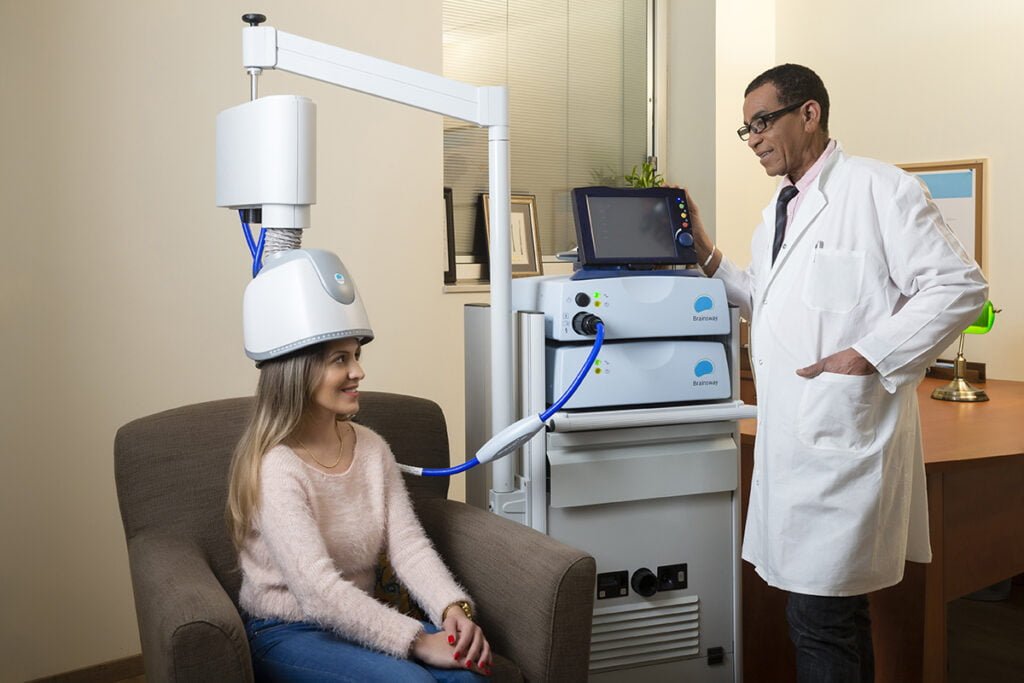TMS
Beat Depression with TMS Therapy: Your Solution to Overcoming Depression!
Welcome to Behavioral Health Care, P.C. – Making Life Better. Say goodbye to the heavy burden of depression and hello to a life filled with joy and fulfilment. With TMS Therapy, your journey towards happiness begins now.
Meet our experts:
Dr. J. Saifollahi, MD
Dr. M. Rouhani, MD
Our services are designed to address a range of mental health challenges, including severe depression, OCD, anxiety, ADHD, bipolar disorder, and cognitive impairments. Whether you’re struggling with daily tasks or facing overwhelming emotions, we’re here to help you find the path to a brighter tomorrow.
We specialize in innovative treatments like Transmagnetic Stimulation Therapy and personalized psychiatric medication management. Our goal is to provide you with effective solutions tailored to your unique needs.

What is TMS Therapy?
TMS stands for transcranial magnetic stimulation. This innovative therapy utilizes electromagnetic fields, akin to those produced by an MRI machine, to stimulate specific areas of the brain associated with depression. It’s a non-invasive procedure that offers hope to those seeking relief from the burdens of depression.
How does it work?
During TMS Therapy, a magnetic field is applied in short pulses to the targeted area of the brain, known to be linked with depression. This stimulation induces subtle yet significant changes in brain activity, leading to lasting improvements in mood and well-being. Over the course of several sessions, typically lasting 4-6 weeks, patients experience gradual relief from depressive symptoms.
Benefits of Therapy:
Experience relief without invasive procedures or harmful medications.
Tailored treatment plans designed to meet your individual needs.
Seamless access to care through telemedicine options
What Makes TMS Therapy Your Key to Happiness?
At Behavioral Health Care, P.C., we believe in a holistic approach to mental health care. Our team of experienced psychiatrists is committed to providing compassionate and personalized care to each and every patient. With TMS Therapy, you can take the first step towards a brighter tomorrow and reclaim your happiness.
Why Choose Us?
With over 30 years of combined experience, our team is dedicated to your well-being.
We offer treatments backed by research and tailored to your unique needs.
Receive personalised attention and support throughout your journey to wellness.

Your journey towards a happier and healthier life starts now. Contact us at
(888) 810-3201
to schedule your consultation and take the first step towards a brighter tomorrow.
FAQ
Patients are asked to stop the use of Wellbutrin before beginning TMS and to abstain from alcohol during the course of their TMS treatment.
Most patients start experiencing relief after 5-10 sessions but this can vary greatly depending on the severity of Depression and the individual’s unique genetic makeup. Some may not feel the effects of TMS until as many as 40 sessions while some may feel the effect almost immediately after their first.
The most commonly reported side effects during clinical trials were headache and scalp discomfort. These potential side effects were typically mild to moderate, and were less common after the first week of treatment. During clinical trials, less than 5% of patients treated with TMS discontinued treatment due to side effects. If necessary, headaches from TMS can be treated with over-the-counter pain medications. If the side effects persist, the strength of the TMS pulses can be temporarily reduced to ensure the comfort of the patient.
Yes, patients are able to resume normal activities after the treatment.
TMS is typically contraindicated for individuals with permanent metal implants in or around the head, pacemakers, history of seizure disorder, on medications that reduce seizure threshold, serious head trauma, or have had brain surgery. In some cases TMS may still be applied at the discretion of the treating physician.
Painful no. Uncomfortable? It depends on the individual. In the great majority of patients TMS is well tolerated with only minor discomfort on the scalp where TMS is applied. Most people describe TMS as a light to moderate tapping sensation where the coil is being applied. The sensation of the pulse may feel similar to a TENS unit.
The mechanism of action of TMS is still not fully understood however the response to therapy is indisputable and has consistently demonstrated results in the majority of research being done in the field.
Yes. The CloudTMS TMS Machine is FDA cleared for the treatment of Depression. As such is reimbursable like all the other TMS devices currently in the US market. Our customers tell us that reimbursements can range anywhere from $150 per session from Medicare and up to $600/session from private insurers.
